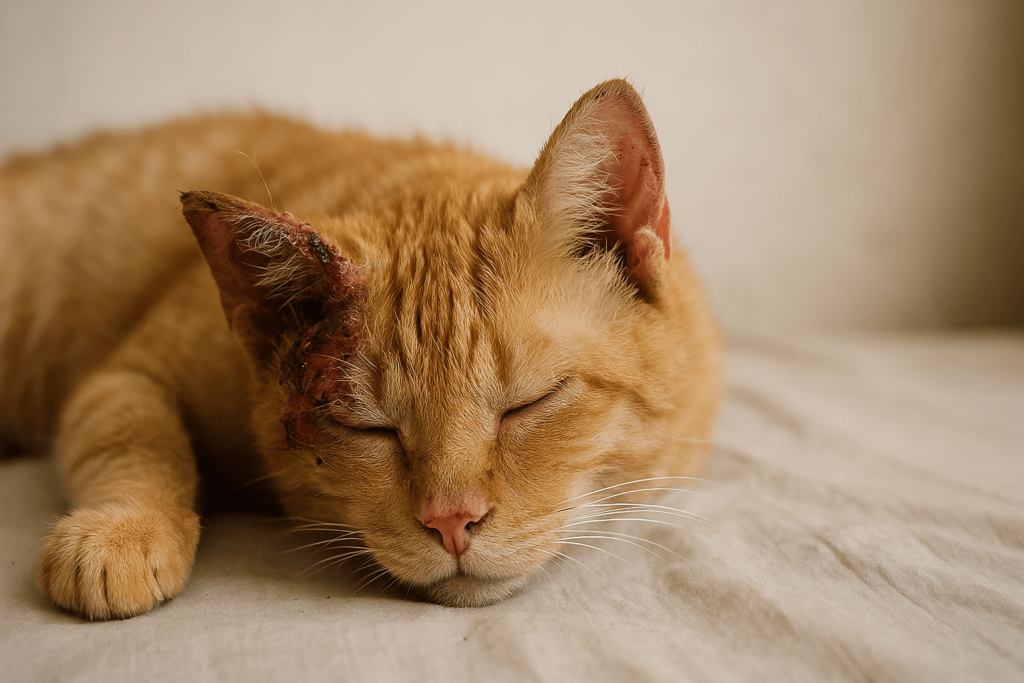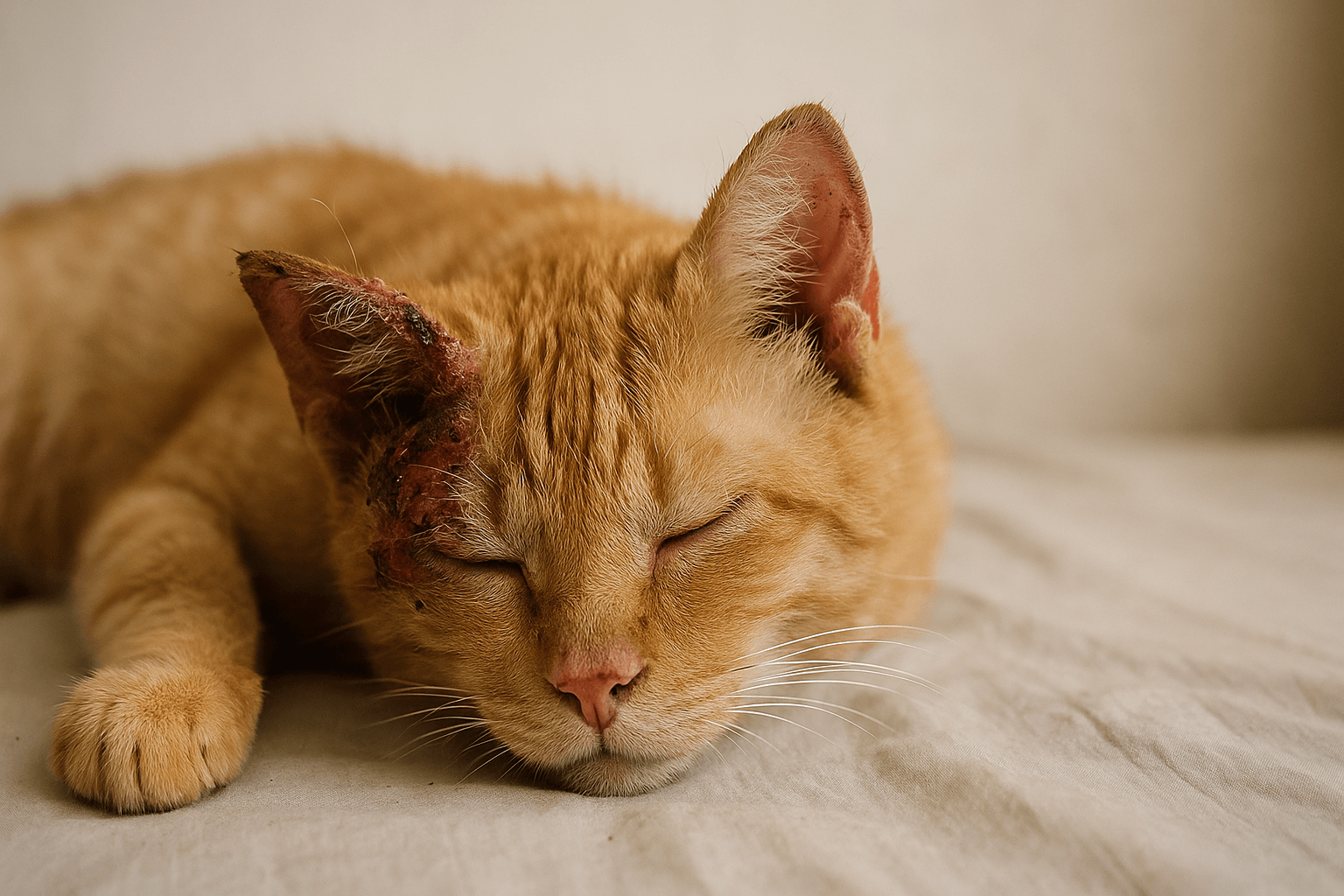Can an Ear Infection Kill a Cat?
Ear infections in cats may seem like minor inconveniences, but if left untreated, they can escalate into serious health issues. While not all ear infections are life-threatening, certain types can lead to severe complications that endanger your cat’s well-being. Understanding the causes, symptoms, and potential risks of feline ear infections is crucial for ensuring timely treatment and preventing long-term damage. This blog post explores everything you need to know about ear infections in cats, from their origins to prevention strategies, so you can keep your furry friend healthy and happy.
Types of Ear Infections in Cats
Cats can suffer from different types of ear infections, each with unique characteristics and levels of severity. Identifying the type of infection is key to determining the appropriate treatment.
Otitis Externa:
This is the most common type, affecting the outer ear canal. Symptoms include redness, swelling, and discharge. While treatable, it can worsen if ignored.Otitis Media:
This infection affects the middle ear and often results from untreated outer ear infections. It may cause balance issues or head tilting due to inflammation near the inner ear structures.Otitis Interna:
Affecting the inner ear, this condition is the most severe and can impact hearing and neurological functions. Immediate veterinary care is essential.Fungal Infections (Yeast):
Yeast infections thrive in moist environments and can cause intense itching and foul-smelling discharge. They require specific antifungal treatments.Bacterial Infections:
Often secondary to other conditions, bacterial infections can exacerbate inflammation and pain, requiring antibiotics for resolution.
Understanding these types helps cat owners recognize early signs and seek prompt veterinary attention to prevent complications.

Signs Your Cat May Have an Ear Infection
Recognizing the symptoms of an ear infection early can make a significant difference in your cat’s recovery. Keep an eye out for these telltale signs that something might be wrong.
Excessive Scratching or Head Shaking:
Cats with ear infections often scratch their ears vigorously or shake their heads repeatedly in an attempt to relieve discomfort.Unusual Odor or Discharge:
A foul smell or visible discharge (yellow, brown, or bloody) from the ear can indicate an underlying infection.Redness and Swelling:
The ear canal may appear inflamed, swollen, or irritated upon inspection.Changes in Behavior:
Infected cats may become more irritable, lethargic, or reluctant to engage in normal activities due to pain.Hearing Loss or Balance Issues:
Severe infections affecting the inner ear can impair hearing or cause unsteadiness, such as tilting the head or walking in circles.
If you notice any of these symptoms, consult your veterinarian promptly to diagnose and treat the issue before it worsens.
Check this guide 👉Cat Ear Mites Treatment: Best 7 Expert Tips!
Check this guide 👉Cat Ear Infection Symptoms: Best 7 Health Tips!
Check this guide 👉Swollen Cat Ear: Best 7 Expert Tips!
Preventive Measures for Ear Health | Common Causes of Ear Infections |
|---|---|
Regularly clean your cat’s ears | Bacterial overgrowth |
Keep ears dry after baths | Fungal infections (yeast) |
Monitor for signs of allergies | Parasites like ear mites |
Schedule routine vet check-ups | Foreign objects lodged in the ear canal |
Provide a stress-free environment | Underlying systemic illnesses (e.g., diabetes) |
Treatment Options for Feline Ear Infections
Treating an ear infection depends on its type and severity. Your veterinarian will recommend a tailored plan to address your cat’s specific needs effectively.
Topical Medications:
Prescription drops or ointments target localized infections, reducing inflammation and eliminating bacteria or fungi.Oral Antibiotics or Antifungals:
For deeper infections, oral medications may be necessary to combat widespread bacterial or fungal growth.Ear Cleaning Solutions:
Veterinarians often provide safe cleaning solutions to remove debris and excess wax without irritating the ear further.Pain Management:
Anti-inflammatory drugs or pain relievers help alleviate discomfort during the healing process.Surgery in Severe Cases:
Chronic or recurring infections may require surgical intervention to correct structural abnormalities or remove damaged tissue.
Prompt and appropriate treatment minimizes the risk of complications, ensuring your cat recovers fully and comfortably.
Long-Term Effects of Untreated Ear Infections
Ignoring an ear infection can lead to devastating consequences for your cat’s health. Understanding these risks underscores the importance of timely intervention.
Permanent Hearing Loss:
Untreated otitis interna can damage delicate structures in the inner ear, resulting in irreversible hearing impairment.Facial Paralysis:
Severe infections near facial nerves may cause paralysis or drooping on one side of the face.Chronic Pain and Discomfort:
Persistent inflammation leads to ongoing pain, reducing your cat’s quality of life significantly.Systemic Infections:
Bacteria from untreated ear infections can spread through the bloodstream, causing life-threatening sepsis.Behavioral Changes:
Chronic illness and discomfort may alter your cat’s personality, making them withdrawn or aggressive.
These potential outcomes highlight why addressing ear infections promptly is critical for your cat’s overall well-being.
Common Causes of Ear Infections
Several factors can contribute to the development of ear infections in cats. Understanding these causes helps prevent future occurrences and ensures better ear health for your feline companion.
Allergies:
Food or environmental allergies can trigger inflammation in the ear canal, creating a breeding ground for infections.Parasites:
Ear mites are highly contagious and often responsible for ear irritation and subsequent infections.Moisture Build-Up:
Water trapped in the ear after bathing or swimming increases the likelihood of fungal or bacterial growth.Foreign Objects:
Grass seeds, dirt, or debris lodged in the ear canal can irritate the tissue and lead to infection.Underlying Health Conditions:
Diseases like diabetes or immune disorders weaken the body’s defenses, making cats more susceptible to infections.
By addressing these root causes, you can minimize the chances of your cat developing an ear infection.
How to Clean Your Cat’s Ears Safely
Cleaning your cat’s ears properly is an essential part of maintaining their ear health. Follow these steps to ensure a safe and effective cleaning process.
Gather Supplies First:
Use vet-recommended cleaning solutions and soft cotton balls or pads. Avoid Q-tips, which can harm the ear canal.Restrain Gently:
Wrap your cat in a towel to prevent sudden movements while handling their sensitive ears.Apply Solution Carefully:
Squeeze a small amount of cleaner into the ear canal and massage gently to loosen debris.Wipe Away Excess:
Use a cotton ball to wipe away dirt and solution from the outer ear, avoiding deep insertion.Reward Your Cat:
Offer treats or praise to create positive associations with ear cleaning.
Regular cleaning reduces the risk of infections and keeps your cat comfortable.
When to See a Veterinarian
Knowing when to seek professional help is vital for managing ear infections effectively. These scenarios indicate the need for immediate veterinary attention.
Persistent Symptoms Despite Treatment:
If your cat’s condition doesn’t improve after following prescribed treatments, consult your vet for further evaluation.Severe Pain or Aggression:
Signs of extreme discomfort or aggression suggest the infection may have progressed beyond home care capabilities.Loss of Balance or Coordination:
Neurological symptoms like circling or head tilting point to inner ear involvement requiring urgent care.Swollen or Closed Ear Canal:
Significant swelling that obstructs the ear canal indicates advanced infection needing medical intervention.Fever or Lethargy:
Systemic symptoms like fever or unusual lethargy could signal a spreading infection or secondary illness.
Timely veterinary visits ensure your cat receives the care needed to recover safely and completely.
Frequently Asked Questions About Feline Ear Infections
How do I know if my cat has an ear infection?
Look for symptoms like scratching, head shaking, odor, discharge, or changes in behavior.
Can ear mites cause infections?
Yes, ear mites are a common cause of irritation and secondary bacterial or fungal infections.
How can I prevent ear infections in my cat?
Regular cleaning, monitoring for signs of allergies, and keeping ears dry can reduce the risk.
Are some breeds more prone to ear infections?
Breeds with folded ears, like Scottish Folds or Persians, are at higher risk due to reduced airflow in the ear canal.
What should I avoid when treating my cat’s ears?
Avoid using cotton swabs or harsh chemicals, as these can push debris deeper or irritate the ear further.
Prioritizing Your Cat’s Ear Health
While ear infections in cats are not always fatal, neglecting them can lead to severe complications that jeopardize your pet’s health. By staying vigilant, recognizing early warning signs, and seeking professional care, you can protect your cat from unnecessary suffering. Prevention remains the best strategy—regular check-ups, proper hygiene, and a loving approach to your cat’s overall well-being will ensure their ears stay healthy for years to come. Remember, a little attention today can save your cat from significant problems tomorrow.
Cat Fever Treatment: Best 7 Expert Tips! Discover expert advice on identifying, managing, and treating fever in cats to ensure their quick recovery and well-being.
Understanding Meloxicam for Cats: Best 7 Expert Tips! Learn how to safely administer meloxicam, manage side effects, and ensure your cat's comfort with expert advice on feline pain relief.
Amoxicillin for Cat UTI: Best 7 Expert Tips! Discover safe usage, dosage guidelines, and expert advice on treating feline urinary tract infections effectively with amoxicillin.
Understanding Cat Cancer Treatment: Best 7 Expert Tips! Discover expert advice on managing feline cancer, from early detection to treatment options, ensuring your cat’s health and comfort.





